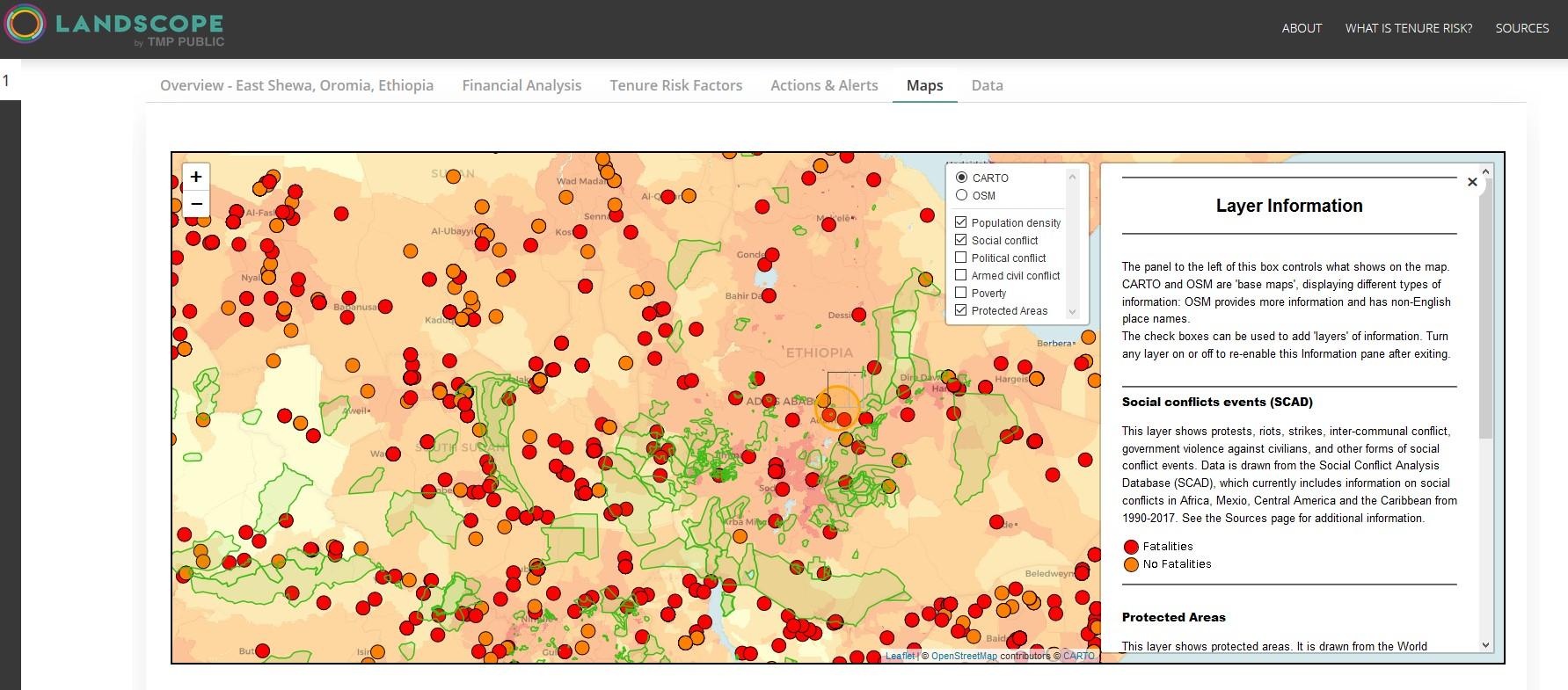August 13, 2020
Can big data analytics help us to make better investment decisions?
Big data analytics can and should support investors´ environmental and social analysis. These analytics can increase both the efficiency and the quality of analysis because they allow mass data gathering to highlight key risks, while human capacity is directed into analysis of most material risks to people and the environment and the actions needed.
In this blog post, I will share my thoughts and experiences from using big data in the contextual risk assessment.
Contextual analysis is part of Finnfund´s environmental and social analysis and this is one area were big data analytics can be useful. At the beginning of our investment process, we make sure that projects are able to meet Finnfund’s environmental and social standards. The bottom line is to ensure that our investees carry out responsible conduct on people and the environment.
You can read more the environmental and social due diligence and how the Covid-19 has affected the process from the recent blog by Anne Arvola and Sylvie Fraboulet-Jussila.
Role of contextual analysis
Contextual analysis is only one part, but an important one, of the investment analysis. Both companies and investors need understanding of the investment landscape, including potential disputes or conflicts. The information is needed to make a decision whether Finnfund can invest and under which conditions.
The information feeds into action plans required from the investee for measures to protect the rights of the local people and communities, ensure good relationship with all stakeholders in the area and to avoid a number of challenges, delays and unplanned costs that emerge if the local context is ignored.
Contextual analysis is important in any investment but especially necessary in investments that use land and involve potential land use change. These include e.g. agriculture, forestry and renewable energy which are all strategic sectors for Finnfund.
Big data analytics in investment analysis
TMP Systems, with financing from DFID and support from the Interlaken Group, has launched a free software called Landscope that focuses on tenure risk assessment but provides data on a wide variety of environmental, social and governance risks and factors, the prevalence of different types of conflicts and the dimensions of local deprivation and poverty.
Finnfund, together with colleagues from eight other development finance institutions (DFI), had the opportunity to be one of the beta testers during the Landscope development process. The software works by analysing the location that the user selects with either a map interface or by inserting coordinates. Users can select up to ten locations at a time and then receive a report within thirty seconds. This report essentially tells the user how similar an area is to other locations in which private investments have experienced tenure-related disputes.

Example view from Landscope.
In addition to a simple summary of the risk of a tenure-related dispute, Landscope gives users alerts for special attention, a map of major risk factors, a financial model template that factors in tenure risk exposure in terms of Net Present Value (based on work produced by TMP and ODI), a breakdown of results by indicator, and guidance about what investor could do about the issues raised.
For example, Landscope might tell the user that the location is very close to a conservation area, there is a major history of violent conflict in the area, and/or that the location has particularly difficult governance issues. What you get is a rough tenure risk analysis of the landscape of the investment as well as insights into drivers of risks and into risk management pathways.
Landscope is unusual because it delivers quantitative analysis of social risks using indicators that have been identified through a statistical investigation using publicly available data. This investigation examined the areas around 600 cases of tenure dispute, and identified fourteen indicators out of an initial set of hundreds, that are correlated with increased risk of tenure dispute. This type of analytics is particularly valuable where data is relatively scarce, such as in rural parts of developing countries.
Will tools like these replace experts?
Most tools for investor data analysis are typically for-pay, not landscape level and do not focus on tenure risk. Landscope is the first landscape level tenure risk tool available for free. The fact that it is free and publicly funded also means that its methodology and datasets are transparent.
All the data that Landscope uses is already publicly available but collecting and going through it is a huge effort. As a DFI, we have the luxury of having a team dedicated to environmental and social risk assessment, however, when operating in complex environments efficiency and focus are needed. I see technology as one opportunity to make our work more efficient and effective.
Like any algorithmic approach, Landscope is generic in many ways. Big data analytics will never replace the expert insight, nor is it intended to do so, but it can help the expert to be more efficient. Using a tool like this can help by highlighting red flags, allowing more time for in-depth analysis of most important issues as well as making an action plan together with the investee company.
A free tool available for everyone improves access to this type of landscape level tenure risk analysis and also increases transparency. Landscope could also be used by investees, financial intermediaries, consultants and other stakeholders.
Big data tools such as the Lansdcope are still the first step. In the future we likely see artificial intelligence (AI) integration that allows a whole new level of customization, learning and application.
Karoliina Lindroos
Senior Environmental and Social Advisor
